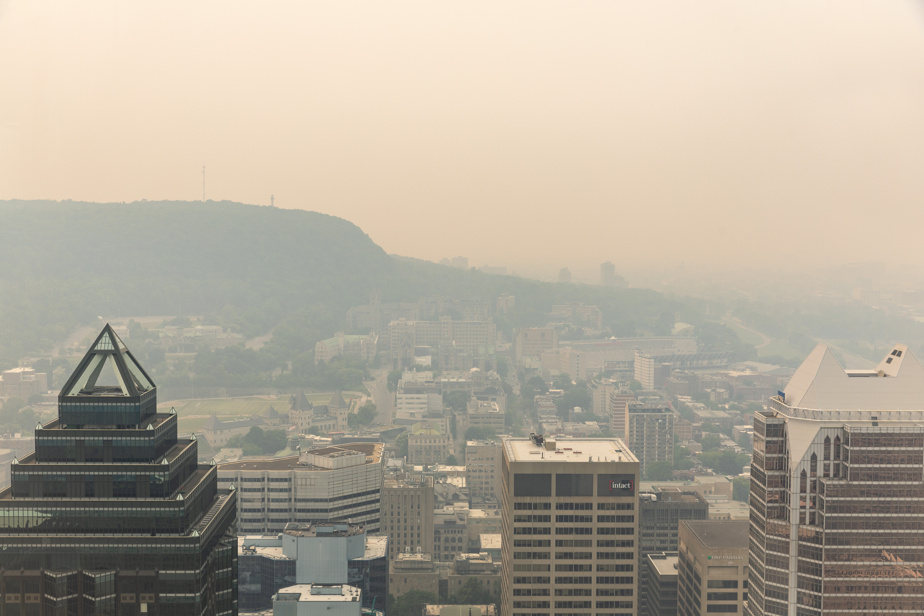Each week, our journalist answers scientific questions from readers.
How can we protect ourselves from the smoke from forest fires when it arrives in Montreal?
John Pellerin
In addition to staying indoors, the federal Minister of Health, Jean-Yves Duclos, recently suggested on his Twitter account the installation of a HEPA filter to filter the air.
But according to American researchers who have published extensively on the issue, it is possible to use less expensive filters.
“We recommend a MERV13 or higher quality filter,” explain in an interview Beth Hassett-Sipple and Amara Holder, of the United States Environment Agency (EPA), who published a summary of their studies in 2021 in the journal Frontiers of Public Health. “Ideally, you should have several spare filters to replace them if necessary during smog episodes related to forest fires. »

PHOTO FROM BETH HASSETT-SIPPLE’S TWITTER ACCOUNT
Beth Hassett-Sipple
A HEPA (high efficiency particulate absorption) filter is equivalent to MERV17 quality, according to EPA specialists. “The higher the level of filtration, the more powerful a fan you need,” they explain. Air recirculation may therefore be less frequent. »
In other words, with the same fan power, the air in your house is recycled more quickly with a MERV13 filter than with a HEPA filter, which opposes greater resistance to the blowing of the fan.
Also, higher quality filters are more expensive. “It may be better to use MERV13 filters because they’re easy to find, relatively inexpensive, and don’t impede the airflow pushed by the fan too much. »
home purifier
You can even easily make a MERV13 purifier yourself using a fan sold in supermarkets and a MERV13 filter, explains Mr.me Holder. To achieve this, all you need to do is get a square fan model that you can put on the floor and to which you attach a filter. “It works very well, several tests have been done with homemade MERV13 purifiers. »
She has just published, in the review indoor-aira study showing that these home purifiers cost less than US$100 and have comparable efficiency to MERV13 filters used in ventilation systems.
The goal is to reduce the amount of PM2.5, particles with a diameter of less than 2.5 micrometers, 0.0025 millimeters.
“Of all the smoke pollutants from wildfires, PM2.5 poses the greatest risk,” explains Dany Doiron, research associate at the Research Institute of the McGill University Health Center (MUHC). “They are inhaled deep into the lungs and cause inflammation that affects other parts of the body. »

PHOTO PROVIDED BY EPA
Amara Holder testing an air purifier in her lab
In addition to aggravating existing lung diseases, PM2.5 increases the risk of chronic diseases, including heart disease.
Many people feel protected by their air conditioning system, note Mme Holder. “But the air conditioning usually doesn’t run continuously, so the air isn’t always filtered. »
Should a MERV13 filter be used when there is simply smog, without a forest fire? “In urban smog, there are other harmful particles than PM2.5, for which MERV13 filters are not effective,” says M.me Hassett-Sipple.
Learn more
-
- 85%
- Minimum proportion of particles with a diameter between 1 and 3 micrometers that are filtered with MERV13 quality
Source: National Air Filtration Association
- 95%
- Minimum proportion of particles with a diameter between 1 and 3 micrometers that are filtered with MERV16 quality
Source: National Air Filtration Association
-
- 50%
- Minimum proportion of particles with a diameter between 0.3 and 1 micrometer that are filtered with MERV13 quality
Source: National Air Filtration Association
- 95%
- Minimum proportion of particles with a diameter between 0.3 and 1 micrometer that are filtered with MERV16 quality
Source: National Air Filtration Association
